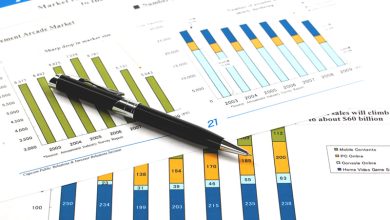
Nervy Conclusion to Volatile Week as Yen Awaits Breakthrough, Reports Reuters
By Jamie McGeever
A glance at the upcoming day in Asian markets reveals a cautious atmosphere. As investors wrap up a turbulent week, they are hoping for stability on Friday. However, concerns about underlying fears regarding U.S. economic growth linger, and the landscape concerning U.S. economic data and policy expectations may pose further challenges next week.
The employment data set to be released in the U.S. on Friday, following the closure of Asian markets, is anticipated to significantly influence global markets until the Federal Reserve announces its interest rate decision and updated economic forecasts on September 18.
Market participants are understandably apprehensive. Key indices are poised for their largest weekly declines since April, while both the major indices and the Nikkei 225 are on track for their most substantial losses in six weeks. Additionally, Shanghai stocks recently hit a new seven-month low.
The yen has depreciated by 5% this week and may decline further if the trend towards yen appreciation continues. On Thursday, the dollar fell below 143.00 yen for the first time since early August, showing signs of downward momentum.
With the stronger yen, Japanese investors are actively pursuing foreign assets. Recent data indicated they have been net purchasers of foreign bonds for the fifth consecutive week and foreign stocks for the third week in a row.
The Federal Reserve’s policy decisions later this month could potentially drive the dollar/yen exchange rate toward the 140.00 mark. San Francisco Fed President Mary Daly indicated that interest rates need to be reduced, although specifics regarding the timeline were not mentioned.
On the domestic front, Japanese rates are expected to rise but at a controlled pace to safeguard businesses from market volatility, as stated by Bank of Japan board member Hajime Takata.
While Federal rate cuts combined with more tightening from the BOJ could lead to increased yen strength, much of this has already been factored into U.S. market projections—over 100 basis points of easing expected this year and about 225 basis points by the end of the next year.
Upcoming data on Japanese household spending for July will be released on Friday, following reports showing that real wages have risen for the second consecutive month. This marks a significant change, as inflation-adjusted wages had been declining monthly for over two years prior to June.
Strong growth in wages and spending may encourage the Bank of Japan to consider additional rate hikes, potentially contributing to further upward movement of the yen.
Other Asian currencies have also experienced notable gains in recent weeks, recovering much of their earlier losses for the year or even entering positive territory.
The economic calendar for Asia on Friday is relatively sparse, with South Korea’s current account figures for August standing out among a few key releases. Additionally, seven countries, including Japan, will announce their latest foreign exchange reserves, which were previously estimated to be around $3 trillion.
Key developments to monitor on Friday include:
- South Korea’s current account (August)
- Japan’s household spending (July)
- Japan’s foreign exchange reserves (August)
 GOOGL
GOOGL  META
META 


